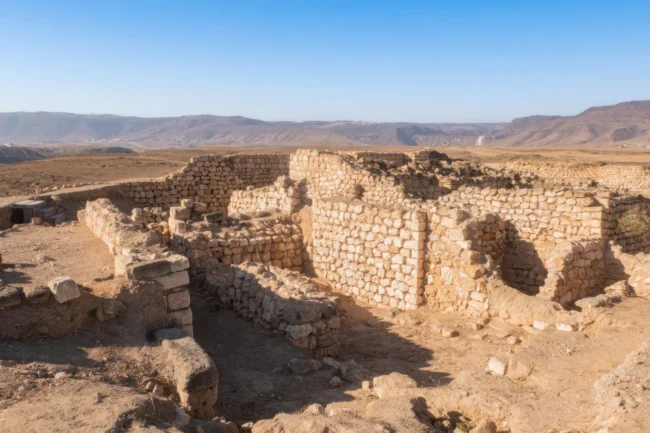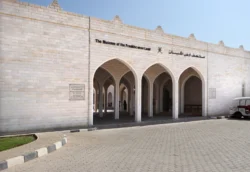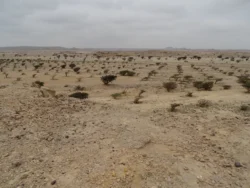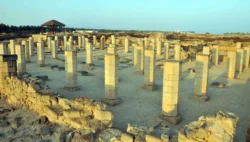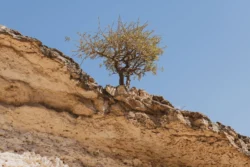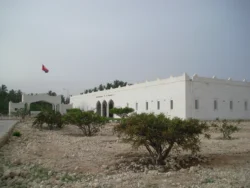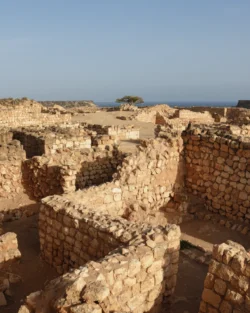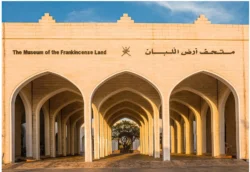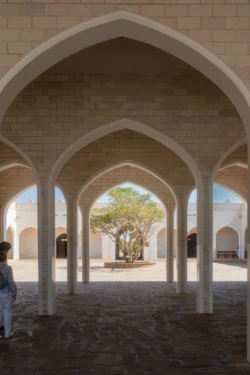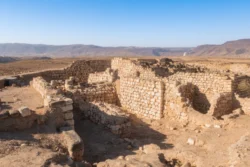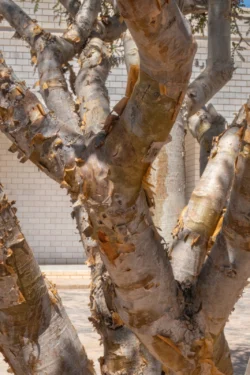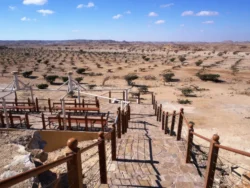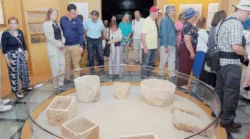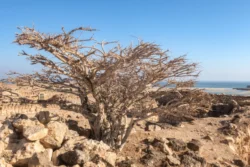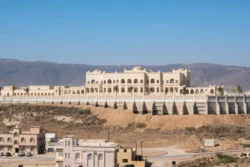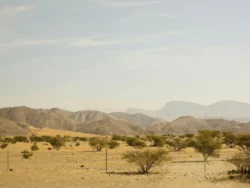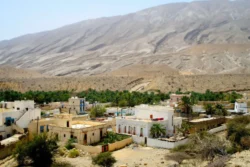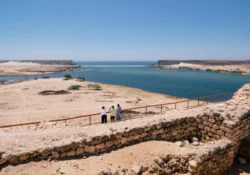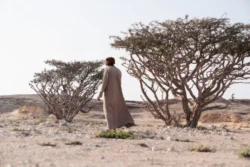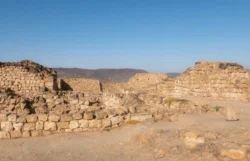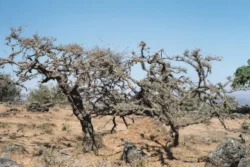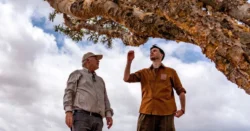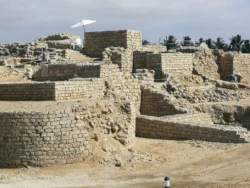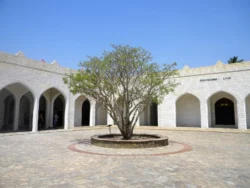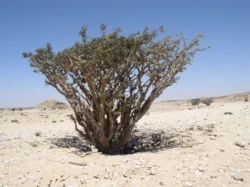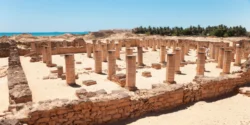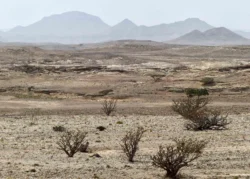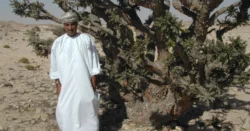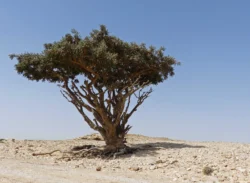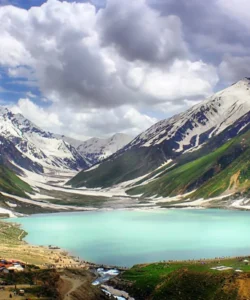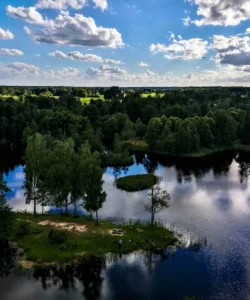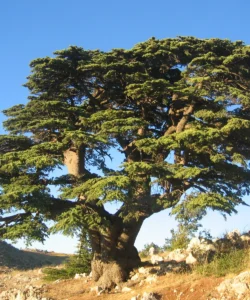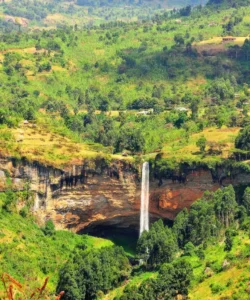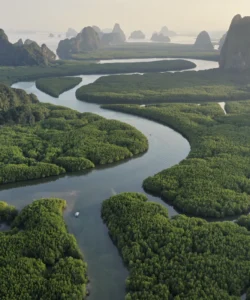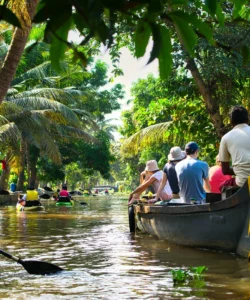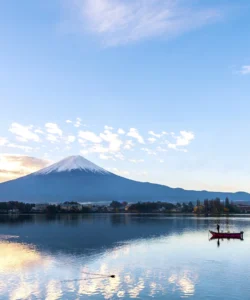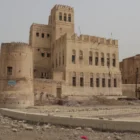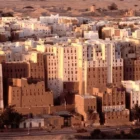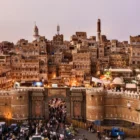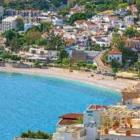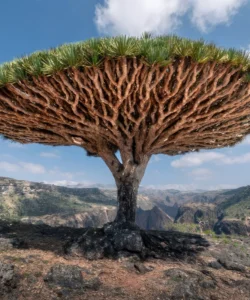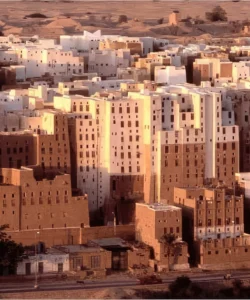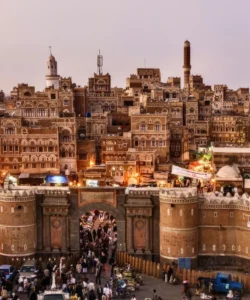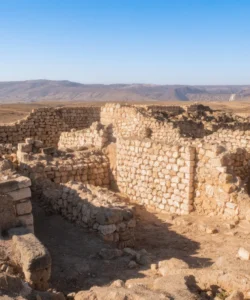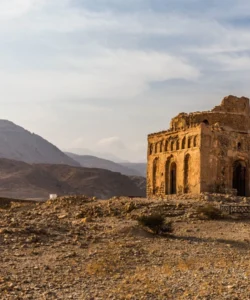The Land of Frankincense, a designated UNESCO World Heritage Site, encompasses several historical and natural locations in Oman’s Dhofar region. This area dramatically illustrates the ancient trade of frankincense, a prized aromatic resin that shaped civilizations and economies for millennia.
Listen to an introduction about The Land of Frankincense
Name and Address
- Name: The Land of Frankincense (Arabic: أرض البخور, ʿArḍ al-Bakhūr), formerly known as the Frankincense Trail.
- Address: Located in the Dhofar Governorate in southern Oman. It comprises four key components:
- Wadi Dawkah: A natural park where frankincense trees (Boswellia sacra) grow.
- Shisr (Wubar/Ubar): An ancient caravan oasis and archaeological site in the desert.
- Khor Rori (Sumhuram): An ancient fortified port.
- Al-Baleed: A medieval fortified port city and archaeological park, home to the Museum of the Frankincense Land.
How to Get There
The sites of the Land of Frankincense are primarily located in the Dhofar region, with Salalah as the main entry point.
- By Air: The most common way to reach Dhofar is by flying into Salalah International Airport (SLL).
- By Car: From Salalah, you can easily access the individual sites by car:
- Al-Baleed Archaeological Park: Located on the outskirts of Salalah, easily reachable.
- Khor Rori (Sumhuram): Approximately 40km east of Salalah.
- Wadi Dawkah: Located inland, behind the northern slopes of the Dhofar mountains.
- Shisr (Wubar/Ubar): About 170-180km north of Salalah in the desert. A 4×4 vehicle may be recommended for desert areas, though main roads are good.
- Organized Tours: Many local tour operators in Salalah offer guided excursions that cover one or more of these sites, providing insights into the history and processes of frankincense trade.
Landscape and Architecture
The Land of Frankincense presents a diverse landscape, from arid wadis to coastal archaeological sites, each reflecting a part of the frankincense trade story.
- Wadi Dawkah: This natural park features a vast concentration of frankincense trees (Boswellia sacra) growing in the alluvial bed of a wadi (seasonal riverbed). The landscape is arid, but the trees thrive in the unique climatic conditions influenced by the southwest monsoon (khareef).
- Shisr (Wubar/Ubar): Located in the Rub’ al Khali (Empty Quarter) desert, this archaeological site reveals the remains of a fortified caravan oasis and water supply station. The ruins often include an eight-sided fort with corner towers, and some believe it aligns with the legendary lost city of Ubar.
- Khor Rori (Sumhuram): This ancient port, built on a hilltop overlooking a natural inlet (khor), features impressive stone fortress remains. Its design includes massive walls with dressed stone faces and rubble cores, and a heavily fortified entrance with multiple gates. The khor once served as a natural harbor.
- Al-Baleed: Situated directly on the coast with a khor (sweet water reservoir) behind it, Al-Baleed is an elevated archaeological park with extensive ruins of a medieval fortified city. Excavations have revealed city walls, remains of a grand mosque with numerous pillars, a citadel, and residential areas, all constructed from stone and mortar.
What Makes It Famous
The Land of Frankincense is globally recognized for its profound historical, cultural, and natural significance:
- UNESCO World Heritage Site: Inscribed in 2000, it dramatically illustrates the trade of frankincense that flourished for centuries, showcasing the civilizations in South Arabia from the Neolithic period to the late Islamic era.
- Ancient Trade Network: It represents one of the most important luxury trade items in the ancient world. Frankincense was crucial in religious rites, medicine, cosmetics, and perfumes, leading to vast international trade routes extending across the Mediterranean, Red Sea, Mesopotamia, India, and China.
- “Gold of the Desert”: Frankincense was often valued as highly as gold. The Dhofar region was, and remains, a primary source of high-quality frankincense (luban).
- Archaeological and Historical Testimony: The combined sites provide exceptional archaeological evidence of a complex trade system, including production areas (Wadi Dawkah), inland caravan routes (Shisr), and major maritime entrepôts (Khor Rori and Al-Baleed).
- Mentioned in Antiquity: The frankincense trade and some of its routes were known and mentioned by classical writers and explorers like Marco Polo and Ibn Battuta.
- Cultural Symbol: Frankincense is deeply intertwined with Omani culture and identity, with its aroma still permeating Omani households and its history being a source of national pride.
Differences from Some Other Attractions
The Land of Frankincense offers a unique heritage experience compared to other Omani attractions due to its specific focus and multi-site nature:
- Commodity-Centric Heritage: Unlike forts (like Bahla Fort or Al Jalali Fort) that focus on defensive architecture or specific historical dynasties, the Land of Frankincense is dedicated entirely to the story of a single, highly significant commodity – frankincense. It highlights the entire supply chain from cultivation to distribution.
- Multi-Component Site: Instead of a single fortified structure, it’s a collection of diverse sites (frankincense groves, a desert oasis, and two coastal ports) that collectively tell the complete story of an ancient trade route. This offers a broader and more integrated historical narrative.
- Natural and Cultural Blend: It uniquely combines natural heritage (the frankincense trees of Wadi Dawkah) with archaeological cultural heritage (the ancient cities and ports). This blend allows visitors to experience both the source of the commodity and the infrastructure that facilitated its trade.
- Geographical Diversity: The sites span different geographical zones within Dhofar – from the lush monsoon-affected coastal areas to the arid desert, providing a varied landscape for exploration.
- Focus on Sustained Production: Wadi Dawkah is not just an archaeological site but an active frankincense park where trees are still cultivated and harvested, offering a living connection to the ancient trade.
The Land of Frankincense Photos:
